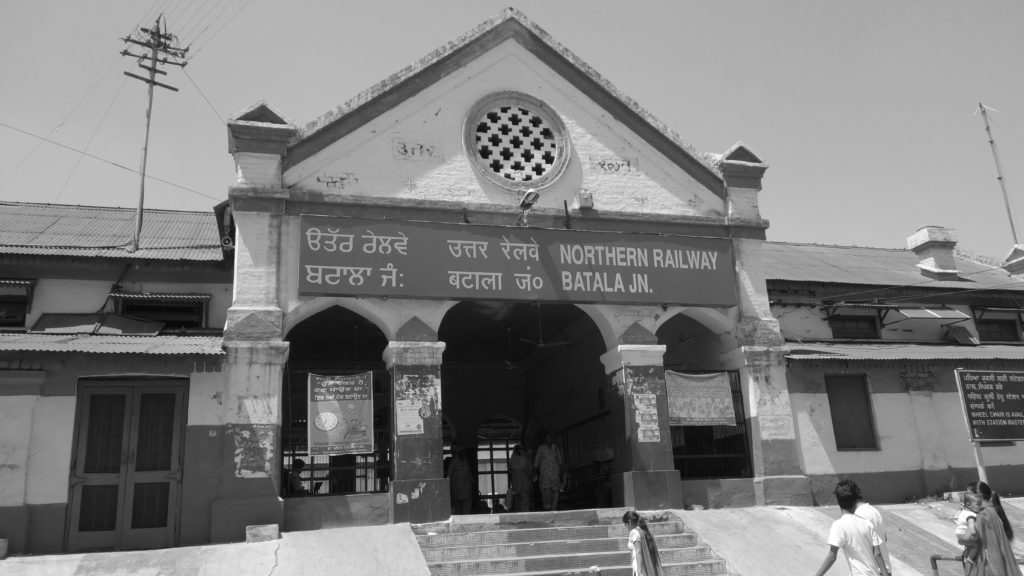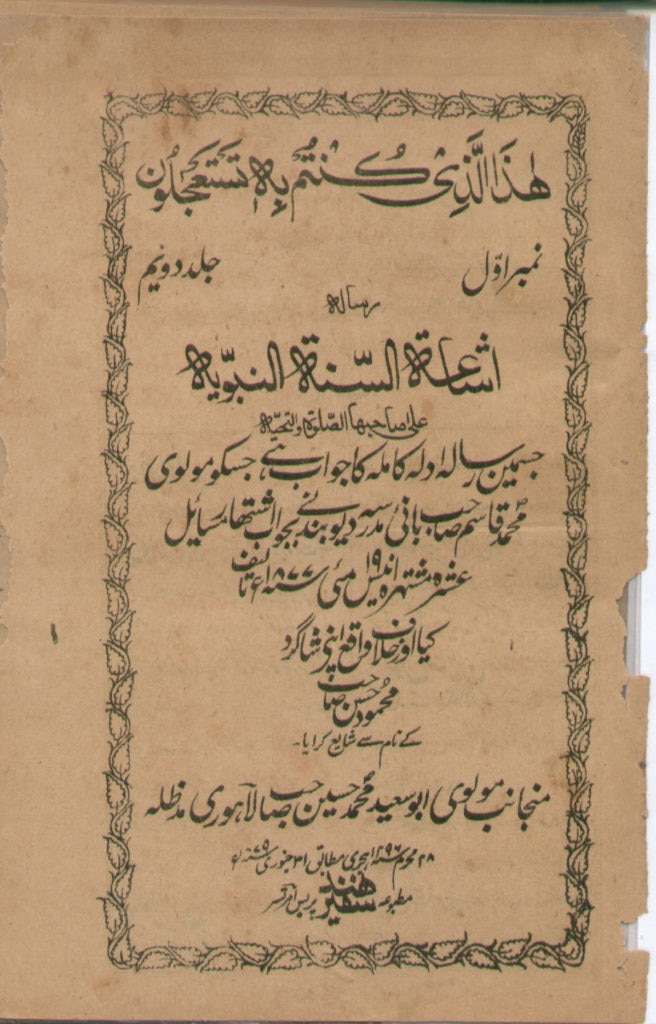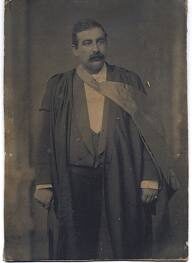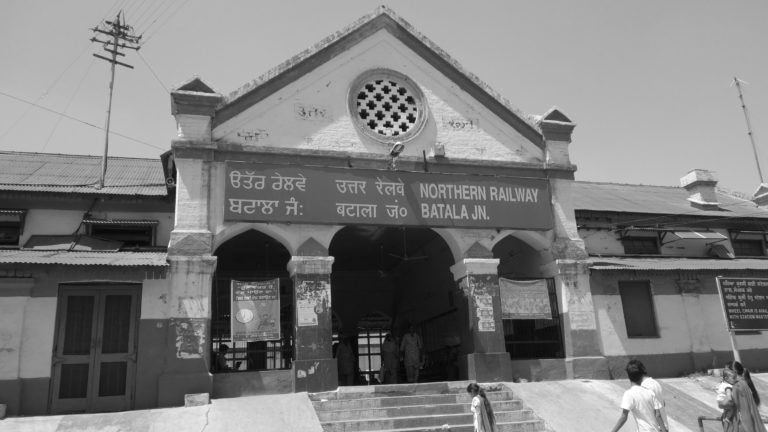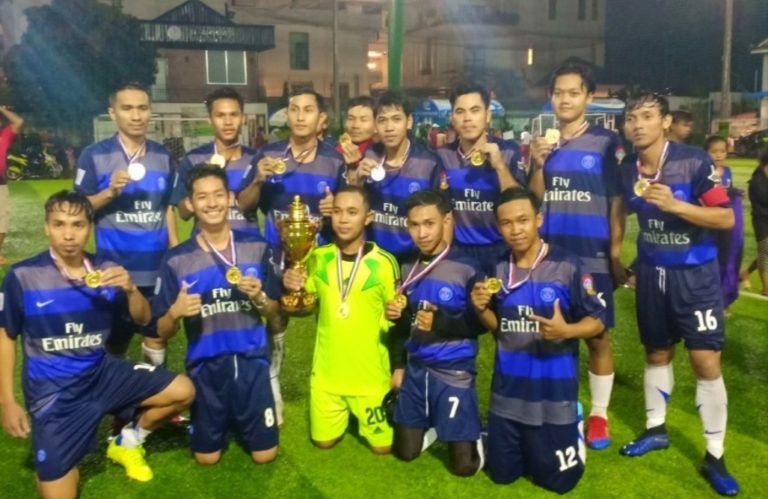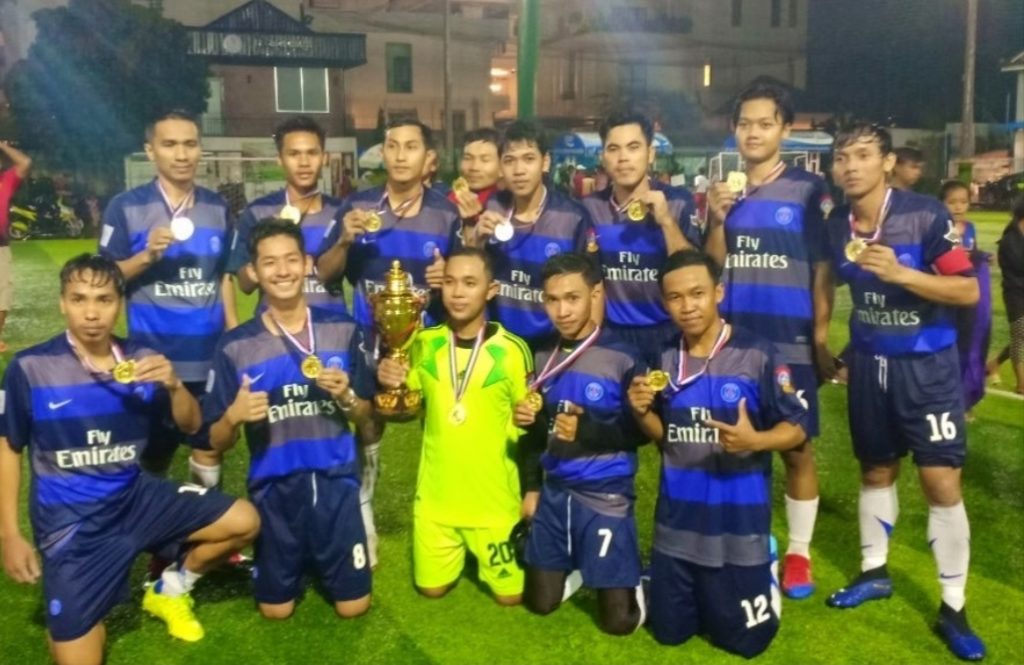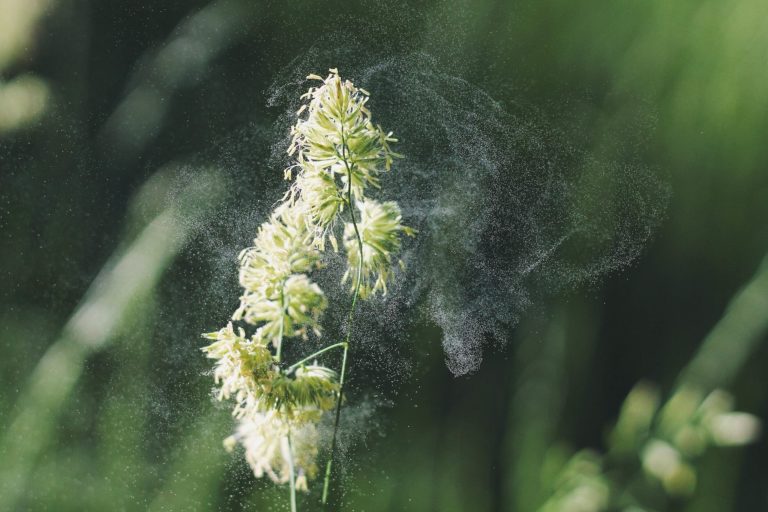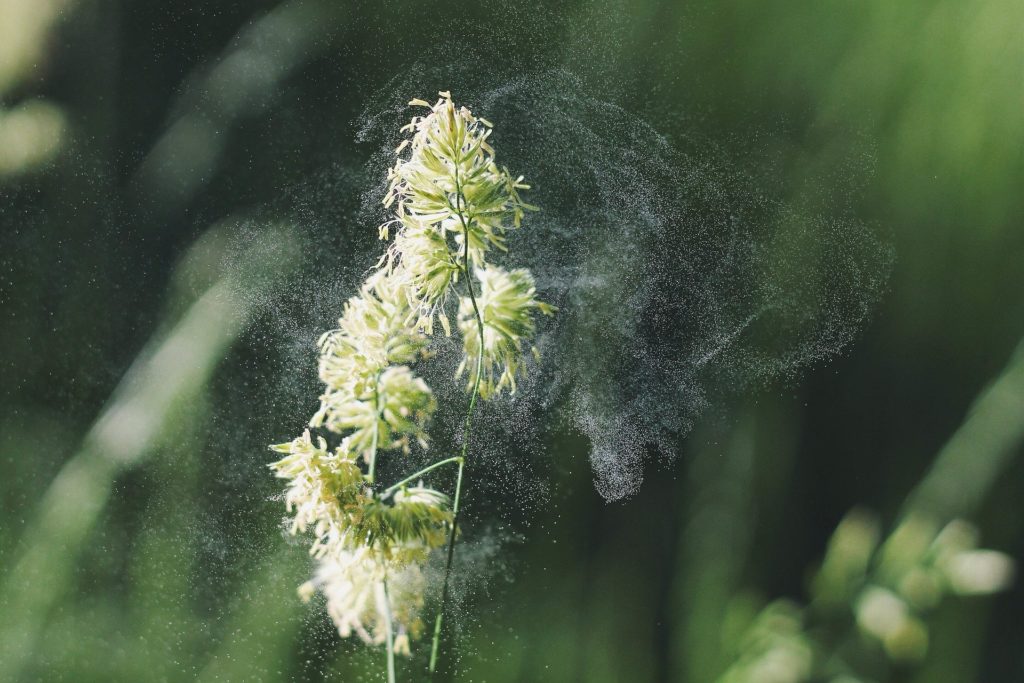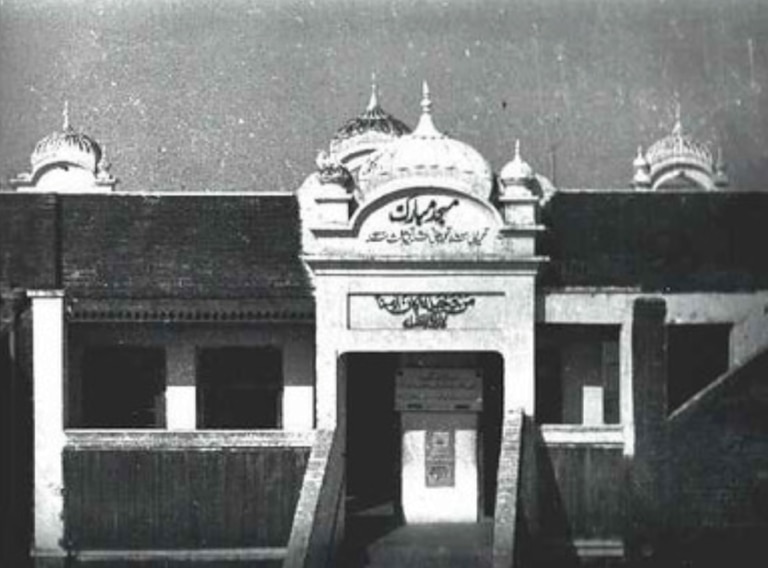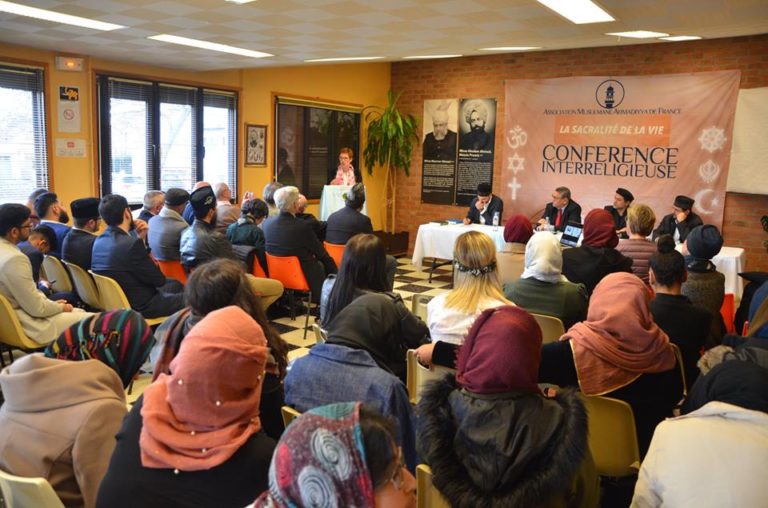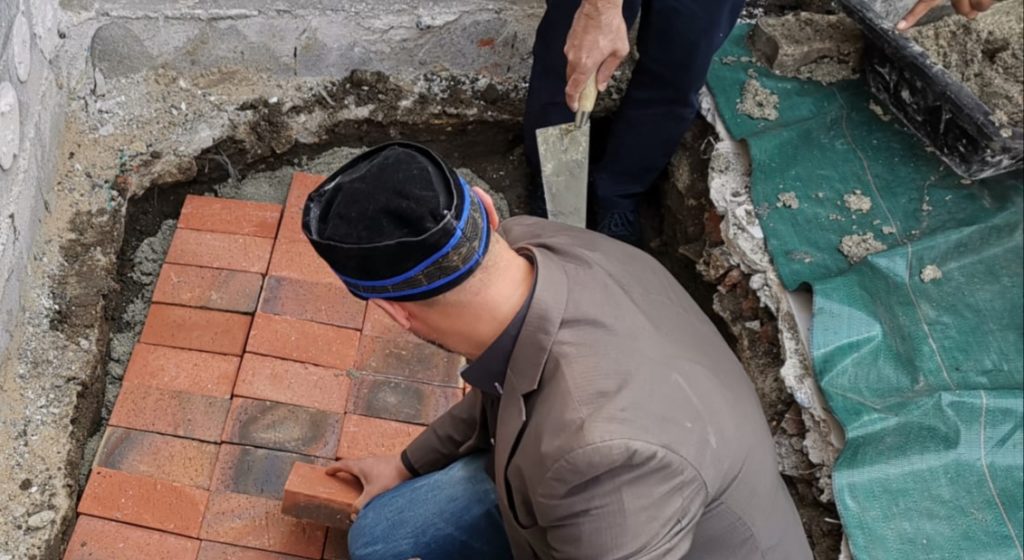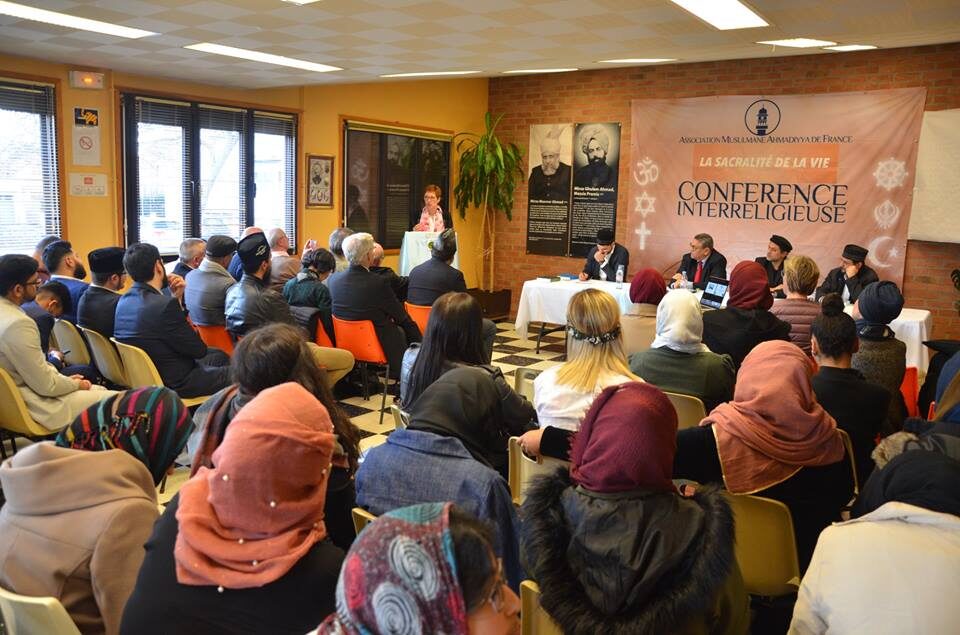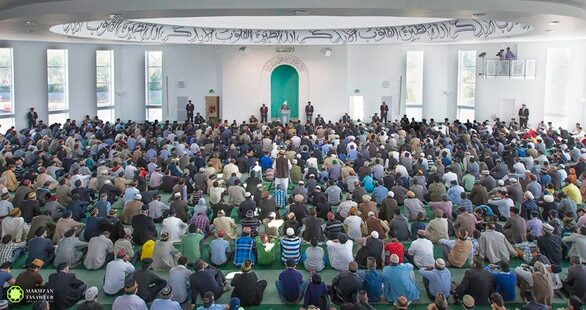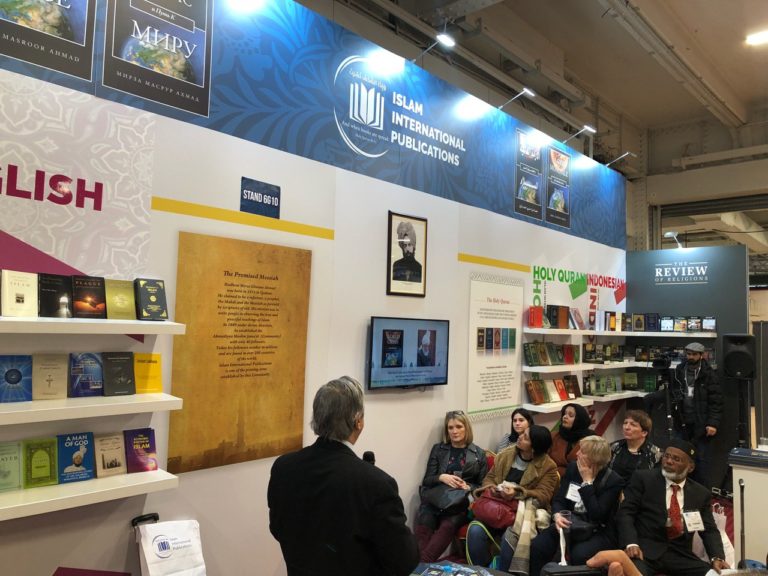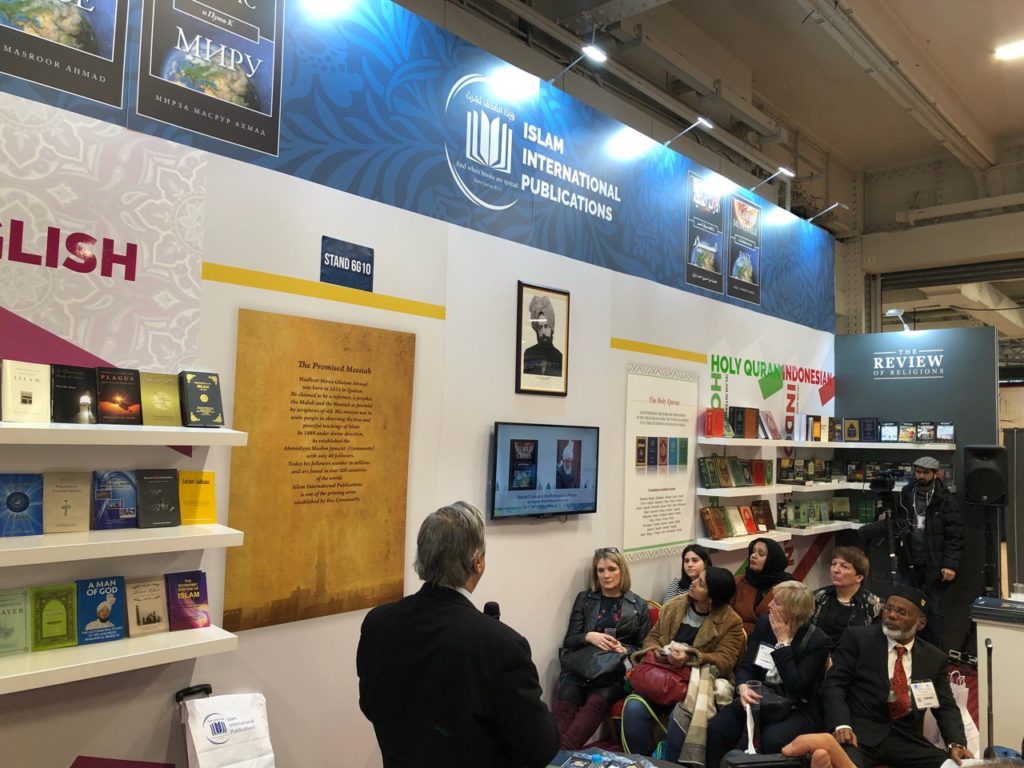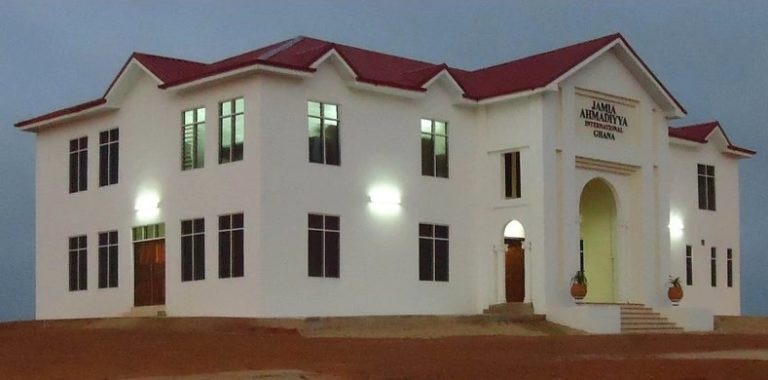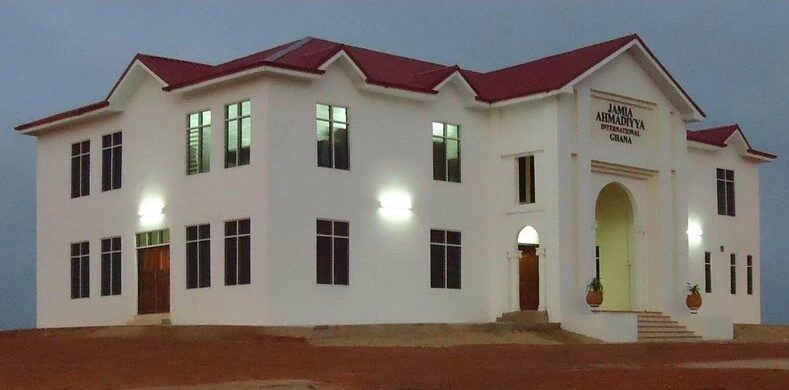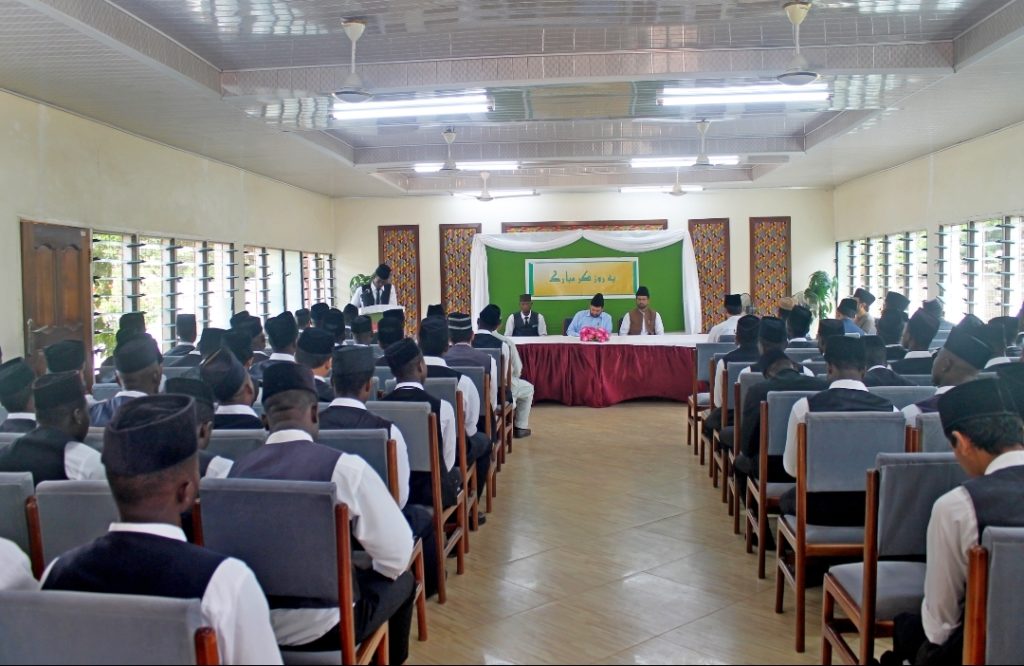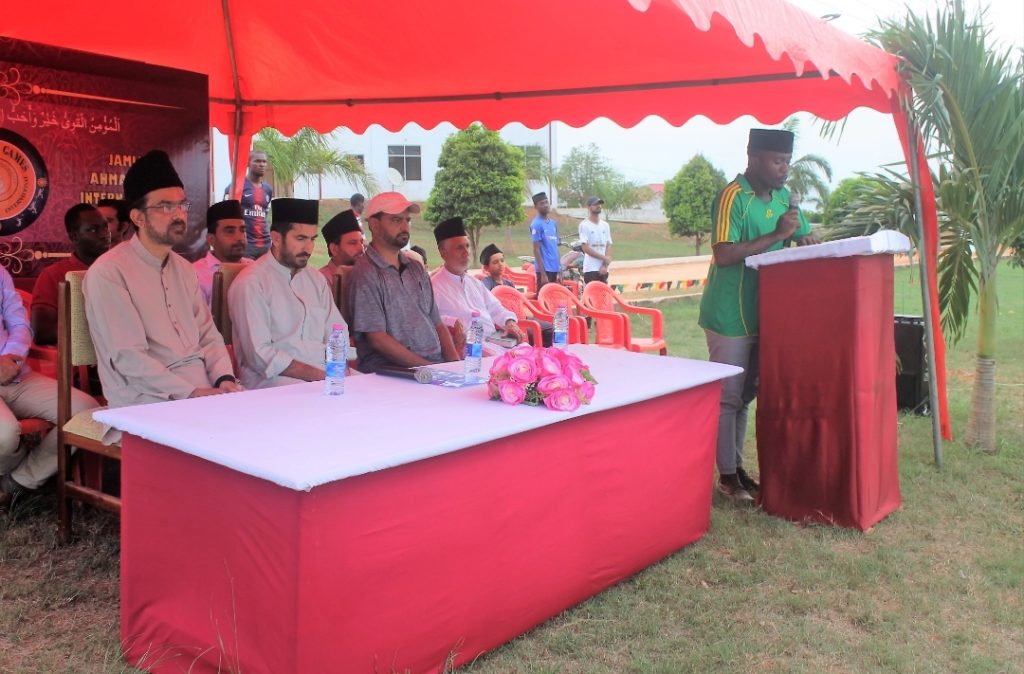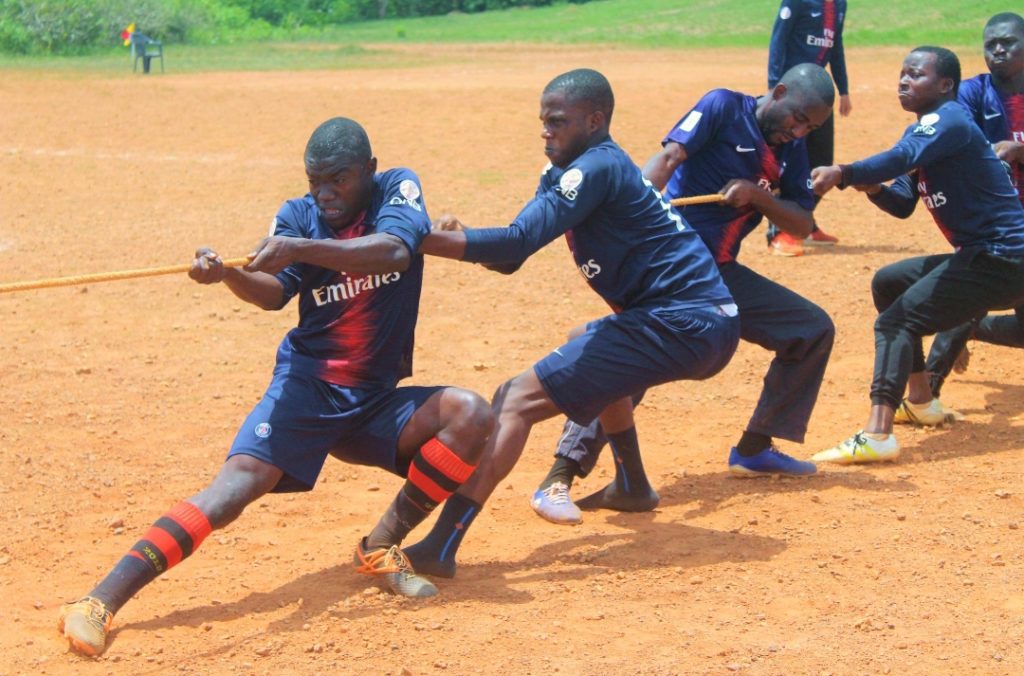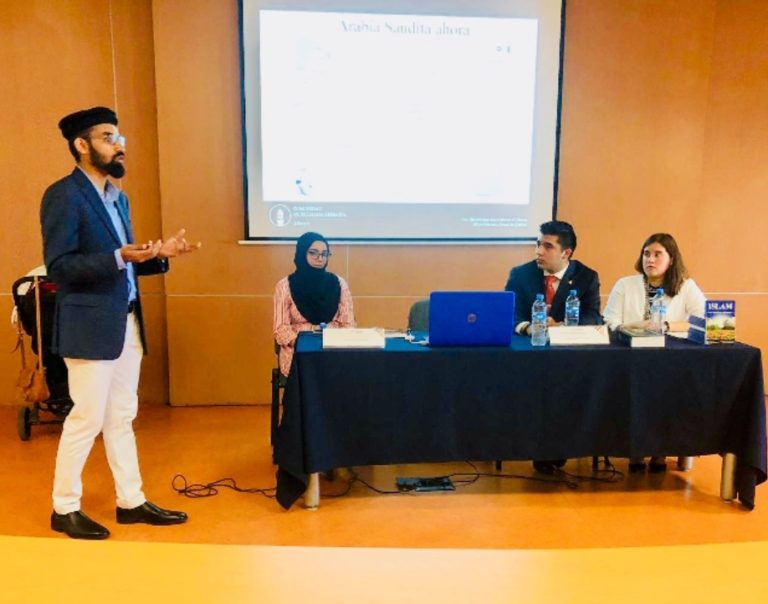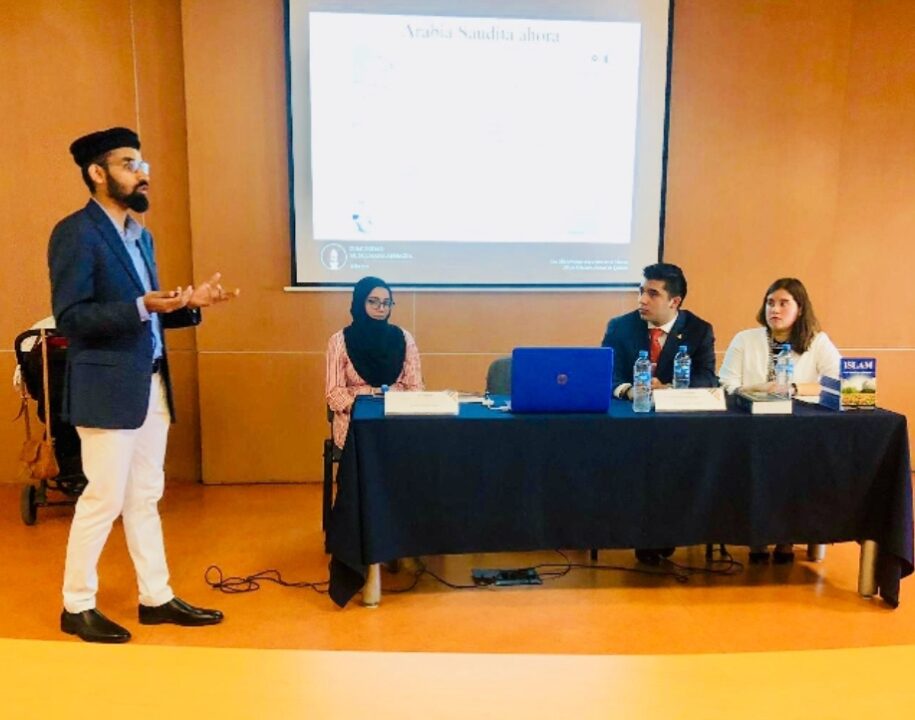Friday Sermon
15 March 2019
Men of Excellence; The Prophet’ssa Mosque
After reciting the Tashahud, Ta‘awuz, and Surah al-Fatihah, Hazrat Khalifatul Masih Vaa stated:
The first companion that I shall
mention today is Hazrat Saibra bin Usman. He belonged to the Banu
Jumah tribe. He was the son of Hazrat Usmanra bin Mazoon. His
mother’s name was Khaulah bint Hakeem. He was from among the early
Muslim.
Hazrat Saibra bin Usman
participated in the second migration to Abyssinia along with his father and his
uncle, Hazrat Qudamahra. After the migration to Medina, the Holy
Prophetsa established a bond of brotherhood between Hazrat Saibra
bin Usman and Harithahra bin Suraqah Ansari. He was among the
companions who were appointed as the archers of the Holy Prophetsa.
Hazrat Saib bin Usmanra participated in the Battles of Badr, Uhud
and Khandaq and all other battles alongside the Holy Prophetsa. (Usdul
Ghaba, Vol. 2, pp. 396-397, Saib bin Usmanra, Dar-ul-Kutb
Ilmiyyah, Beirut, 2003)(Al-Tabqaat-ul-Kubra li ibn Saad, Vol.
3, pp. 306-307, Dar-ul-Kutb al-Ilimiyya, Beirut, 1990) (Al-Asaba Fi
Tameez Al-Sahaba, Vol. 3, p. 20, Saib bin Usmanra, Dar-ul-Kutb
Al-Ilimiyya, Beirut, 1995)
The Holy Prophetsa appointed
him the Amir over Medina during the Battle of Buwaat. Regarding the Battle of
Buwaat, which took place in 2 AH, Hazrat Mirza Bashir Ahmadra has
written:
“During the last days of this Rabiul
Awwal or in the beginning of Rabiul Sani, the Holy Prophetsa once
again received news of the Quraish. Upon this, the Holy Prophetsa
took along a group of companions from among the Muhajireen and set out himself.
He appointed Saib bin Usman bin Mazoonra as the Amir of Medina in
his absence. However, the whereabouts of the Quraish could not be ascertained
and upon reaching Buwaat, the Holy Prophetsa returned.” (Sirat
Khatamun-Nabiyyin, Hazrat Mirza Bashir Ahmadra, p. 329)
Buwaat is the name of a mountain
situated near the tribe of Juhainah, located about 48 miles from Medina. (Subul
Al-Huda, Vol. 4, p. 15, Baab Ghazwa-e-Bawaat, Dar-ul-Kutb Ilmiyyah, Beirut,
1993)
Hazrat Saibra bin Usman
participated in the Battle of Yamama. The Battle of Yamama took place in 12 AH
during the caliphate of Hazrat Abu Bakr, in which Hazrat Saibra was
struck by an arrow, which later led to his martyrdom. He was over the age of 30
at the time of his demise. (Al-Tabqaat-ul-Kubra li ibn Saad, Vol. 3, p.
307, Saib bin Usmanra bin Mazoon, Dar-ul-Kutb al-Ilimiyya, Beirut,
1990)
The next companion to be mentioned is
Hazrat Dhamrahra bin Amr Juhni. Hazrat Dhamrah’sra
father’s name was Amr bin Adi. Some also report his father’s name as Bishr. He
was a confederate of the tribe of Banu Tareef. However, according to some, he
was a confederate of the tribe of Banu Saaidah, which was the tribe of Hazrat
Saadra bin Ubaadah. (Confederate means that they had a mutual
agreement to help each other, should a need arise.) Allamah Ibn Athir writes in
Usdul Ghaba, “This is not a contradiction because Banu Tareef was a
branch of Banu Saaidah.” Hazrat Dhamrahra participated in the
battles of Badr and Uhud and was martyred during the Battle of Uhud. (Usdul
Ghaba, Vol. 3, pp. 60-61, Dhamrahra bin ‘Amr Juhni, Dar-ul-Kutb
Ilmiyyah, Beirut, 2003)
The next companion to be mentioned is
Hazrat Saadra bin Suhail. Hazrat Saadra was from among
the Ansar. Some have reported his name as Saeed bin Suhail. Hazrat Saadra
participated in the Battles of Badr and Uhud. He also had a daughter, whose
name was Huzaila. This is all that is known about him. (Usdul Ghaba, Vol.
2, p. 439, Saadra bin Suhail, Dar-ul-Kutb Ilmiyyah, Beirut, 2003) (Al-Tabqaat-ul-Kubra
li ibn Saad, Vol. 3, p. 395, Saadra bin Suhail, Dar-ul-Kutb
al-Ilimiyya, Beirut, 1990)
Next I will mention Hazrat Saadra
bin Ubaid, who also participated in the Battle of Badr. Hazrat Saadra
bin ‘Ubaid participated in all the battles alongside the Holy Prophetsa
including the Battles of Badr, Uhud and Khandaq. His name has also been
reported as Saeed. He was known by the title of Qari and also commonly known as
Abu Zaid.
Hazrat Saadra bin Ubaid is
counted amongst those four companions from the Ansar who collated the Holy
Quran during the lifetime of the Holy Prophetsa. His son, Umair bin
Saad was a governor in one of the regions of Syria during the caliphate of
Hazrat Umarra. According to one narration, Hazrat Saadra
bin Ubaid used to lead the prayers in the Quba mosque during the lifetime of
the Holy Prophetsa. He was also appointed to lead the prayers during
the caliphates of Hazrat Abu Bakrra and Hazrat Umarra.
Hazrat Saadra bin Ubaid was martyred during the Battle of Qadisiyyah
in 16 AH. He was sixty-four years of age at the time of his martyrdom.
Abdur-Rahman bin Abu Laila narrates
that during the Battle of Jisr, which took place in 13 AH, the Muslims were
defeated and suffered a great loss and Hazrat Saadra bin Ubaid had
to retreat from the battle. Upon his return, Hazrat Umarra asked
Hazrat Saadra bin Ubaid that if he had the desire to go for Jihad in
Syria. For Muslims had been brutally attacked there and suffered greatly. If he
agreed, he should go there as the enemy had become brazen due to the injury and
bloodshed caused to the Muslims.
Hazrat Umarra further added
that perhaps he would be able to heal the scar of humiliation owing to their
defeat. This is because he had retreated from the Battle of Jisr and the
Muslims had suffered a great loss. Hence, Hazrat Umarra said to him
that if he wished to remove the scar of the humiliation and defeat, there was a
battle taking place towards Syria as well. However, Hazrat Saadra
replied that he would not go to any other land besides the land from where he
had fled or returned unsuccessfully. Furthermore, he said, “I will only go
after the enemy, who succeeded in what they set out to do against me.” In other
words, he referred to the enemy that had become victorious in the battle
against him. Hence, Hazrat Saadra bin Ubaid returned to Qadisiyyah
and was martyred in combat.
Abdur-Rahman bin Abu Laila relates that
Hazrat Saadra bin Ubaid addressed the people and said, “We will
fight the enemy tomorrow and we shall be martyred. Therefore, you should
neither wash the blood from our body, nor dress us in any other clothes for
burial besides the clothes we are wearing.” (Usdul Ghaba, Vol. 2, p.
445, Saadra bin Ubaid, Dar-ul-Kutb Ilmiyyah, Beirut, 2003) (Al-Tabqaat-ul-Kubra
li ibn Saad, Vol. 3, p. 349, Saadra bin Ubaid, Dar-ul-Kutb
al-Ilimiyya, Beirut, 1990) (Al-Asaba Fi Tameez Al-Sahaba, Vol. 3, p. 57,
Saadra bin Ubaid, Dar-ul-Kutb Al-Ilimiyya, Beirut, 1995)
I mentioned a brief account in relation
to the Battle of Jisr in one of the previous sermons, but I will share a few
more details. As I have mentioned, the Battle of Jisr was fought in the 13 AH
on the bank of the Euphrates between Muslims and Iranians. The
commander-in-chief of the Muslims was Hazrat Abu Ubaid Saqfira,
whereas the commander-in-chief of the Iranians was Bahman Jadhawiyah. The
number of the Muslim army was 10,000, whereas the Iranian army numbered 30,000
and they also had 300 elephants.
During the course of the battle, the
opposing armies met at the Euphrates, which proved to be an obstacle in the
battle and thus fighting ceased between the two armies for some time. This
continued to the extent that a Jisr – that is a bridge – was constructed over
the Euphrates with both parties being in agreement to it. Due to this very
bridge, it is known as the Battle of Jisr. Once the bridge was completed, Bahman
Jadhawiyah sent a message to Hazrat Abu Ubaidra saying, “Will you
cross the bridge and come to us or will you permit us to cross it?” Hazrat Abu
Ubaidra was of the opinion that the Muslim army should cross the
river and fight the opposing army. However, the leaders of the army, which
included Hazrat Salitra, were against this opinion. Nevertheless,
Hazrat Abu ‘Ubaidra crossed the Euphrates and attacked the Iranian
army. The battle continued in this manner for a short period.
A short while later, Bahman Jadhawiyah
saw his army scattered around. He saw that the Iranian army was retreating upon
which, he ordered the elephants to be moved to the front. As a result of the
elephants moving to the front, the rows of the Muslims were broken and became
disorganised. The Muslim army began to scatter to different places. Hazrat Abu
Ubaidra said to the Muslims, “O servants of Allah! Attack the
elephants and cut off their trunks.” Having said this, Hazrat Abu Ubaidra
himself advanced and attacked an elephant and cut off its trunk. Seeing this,
the remaining army also quickly began to fight. They cut off the trunks and
feet of several elephants and killed those that were riding on them.
Coincidentally, Hazrat Abu Ubaidra came face to face with an
elephant and he struck his sword and cut off its trunk. However, he was
trampled under its feet and was martyred. Following the martyrdom of Hazrat Abu
Ubaidra, seven men, one after the other, grabbed hold of the Islamic
flag and each one was martyred during the battle. The eighth individual was
Hazrat Musannara who grabbed hold of the Islamic flag and intended
to launch another valiant attack. However, the rows of the Muslim army were
unorganised and having seen seven of their leaders being martyred one after the
other, people began to disperse in different directions and some jumped into
the river. Hazrat Musannara and his companions continued to fight
courageously. In the end, Hazrat Musannara was wounded and whilst
continuing to battle against the enemy, he crossed the river and returned.
Muslims suffered a great loss during this incident. Four thousand Muslim men
were martyred, whereas six thousand Iranian soldiers were killed. (Tarikh
ibn Khuldoon, translated by Hakim Ahmad Hussain Al-Abadi, Vol. 3, pp.
270-273, Dar-ul-Isha’at Karachi, 2003)
The reason why the Battle of Jisr
occurred in the first place was because the Iranians launched continuous
attacks against the Muslims. Therefore, in order to stop these attacks,
permission was sought to fight.
The next companion to be mentioned is
Hazrat Sahlra bin Atik. His name is also mentioned as Suhail. The
name of his mother was Jamila bint Alqama. Hazrat Sahlra bin Atik
participated in the second pledge at Aqabah along with seventy Ansar. He had
the honour to participate in the battles of Badr and Uhud. (Usdul Ghaba,
Vol. 2, p. 578, S Sahlra bin ‘Atik, Dar-ul-Kutb Ilmiyyah, Beirut,
2003) (Al-Tabqaat-ul-Kubra li ibn Saad, Vol. 3, p. 387, Sahlra
bin ‘Atik, Dar-ul-Kutb al-Ilimiyya, Beirut, 1990)
The name of the companion to be mentioned
next is Hazrat Suhailra bin Rafey. Hazrat Suhailra bin
Rafey belonged to the tribe of Banu Najjar. The piece of land on which Masjid
Nabawi [mosque of the Prophetsa] was constructed was the property of
Hazrat Suhailra and his brother, Hazrat Sahlra. The name
of his mother was Zughaiba bint Sahl. Hazrat Suhailra participated
in all the battles alongside the Holy Prophetsa, including the
battles of Badr, Uhud and the Ditch. He passed away during the caliphate of
Hazrat Umarra. (Al-Tabqaat-ul-Kubra li ibn Saad, Vol. 3, p.
372, Suhail bin Rafi’, Dar-ul-Kutb al-Ilimiyya, Beirut, 1990)
With regard to the migration of the
Holy Prophetsa to Medina, I will mention what Hazrat Musleh-e-Maudra
has written.
Hazrat Musleh-e-Maudra
writes:
“While the Prophetsa was in
Medina, everybody longed to have the honour of being his host. As his camel
passed through a lane, families would line up to receive him. With one voice
they would say, ‘Here we are with our homes, our properties and our lives to
receive you and to offer our protection to you. Come and live with us.’ Many
would show greater zeal, go forward and hold the reins of the camel and insist
on the Prophet dismounting in front of their doors and entering their houses.
Politely, the Prophetsa would refuse saying, ‘Leave my camel alone.
She is under the command of God; she will stop where God wants her to stop.’
Ultimately, it stopped on a site that belonged to orphans of the Banu Najjar
tribe, which was situated to one side of Medina. The Holy Prophetsa
dismounted and said, ‘It seems that this is where God wants us to stop.’ He
made enquiries as to who the owner of that plot of land was. It was discovered
that the land belonged to a few orphans. A trustee of the orphans came forward
and said that the property belonged to such and such orphans, and offered the
site for the use of the Holy Prophetsa. The Holy Prophetsa
replied that he would not accept the offer unless he was allowed to pay. A
price was settled, and the Prophetsa decided to build a mosque and
some houses on it.” (Deebacha Tafsir-ul-Quran, Anwar-ul-Aloom, Vol. 20,
p. 228)
Hazrat Mirza Bashir Ahmadra
Sahib has mentioned more details about this account in Sirat
Khatamun-Nabiyyin. He writes:
“Upon arriving in Medina, the first
task was the construction of Masjid-e-Nabawi. The place where the camel of the
Holy Prophetsa chose to rest was the property of two children from
Medina named Sahlra and Suhailra, who lived in the
guardianship of Hazrat As‘adra bin Zurarah. This was a vacant land
(which was barren and uninhabited), on which a few date palms had been planted
in one area. In another area, there were ruins, etc. The Holy Prophetsa
selected this plot to construct the Masjid-e-Nabawi, and his own livings
quarters. This plot of land was purchased for 10 Dinar. The surface was
levelled and cleared of trees, after which the construction of Masjid-e-Nabawibegan.” (Sirat Khatamun-Nabiyyin, Hazrat Mirza Bashir Ahmadra,
p. 269)
According to another narration, the
payment for this piece of land was made by Hazrat Abu Bakr Siddiqra.
(Sharah Zurqani, Vol. 2, p. 186, Dar-ul-Kutub Al-Ilmiyyah, Beirut,
1996)
Hazrat Mirza Bashir Ahmadra
further writes:
“The surface was levelled and cleared
of trees, after which the construction of Masjid-e-Nabawibegan. The
Holy Prophetsa supplicated to Allah and laid the foundation stone
himself. Just as in the construction of the mosque at Quba, the Companionsra
worked as builders and labourers. The Holy Prophetsa would also
participate at times. Occasionally, while lifting bricks, the Companions would
recite the following couplet of Abdullahra bin Rawahah:
هَذَا الْحِمَالُ لَا حِمَالَ خَيْبَر، هَذَا أَبَرّ رَبّنَا وَأَطْهَرُ
‘This burden is not the burden of
Khaibar’s commercial goods, which arrive loaded on the backs of animals;
Rather, O our Lord! This is the burden of virtue and purity, which we bear for
your pleasure.’
“At times, the Companions would recite the
following couplet of Abdullahra bin Rawahah:
اَللّٰهُمّ اِنّ الْاَجْرَ اَجْرُ الْاٰخِرَه، فَارْحَمِ الْاَنْصَارَ وَالْمُهَاجِرَه
‘O
Our Allah! True reward is merely that of the hereafter. By Your Grace, send
down Mercy upon the Ansar and Muhajirin.’
“When the Companions would recite this
couplet, at times, the Holy Prophetsa would also join in. In this
manner, after a long period of hard work, the mosque was completed. The
structure of the mosque was made from slabs and bricks, which were assembled
between wooden pillars. (In those days, the way they would build a solid
structure was to make columns from wood and in between they would place bricks
and mud in order to strengthen it.) The roof was covered by trunks and branches
of date palms. Trunks of date palms were placed inside the mosque to support
the roof. Until the building of a pulpit was proposed, the Holy Prophetsa
would lean upon one of these trunks when delivering his sermon. The floor of
the mosque was unpaved, and since the roof would leak after heavy rainfall, the
floor of the mosque would become muddy. As such, in light of this difficulty,
later on a floor of gravel was paved. Initially, the direction of the mosque
was towards Baitul-Maqdas, but after the alteration of the Qiblah, this
orientation was changed. At that time, the height of the mosque was 10 feet,
the length was 105 feet, and the width was 90 feet. Later on, however, this was
extended. (This area of 105 feet by 90 feet can accommodate approximately
fifteen–sixteen hundred worshippers.) To one corner of the mosque, a veranda
was built, which was referred to as Suffah. This was for those destitute
Muhajirinwho were homeless. These people would stay here, and were
known as the Ashabus-Suffah. As such, they would remain in the company of the
Holy Prophetsa day and night, perform worship and recite the Holy
Quran. These people possessed no means of permanent subsistence. The Holy
Prophetsa would take care of them personally and whenever the Holy
Prophetsa would receive a gift or there was something available at
home, he would especially separate their share. As a matter of fact, at times,
the Holy Prophetsa would himself starve and send whatever was in his
home to the Ashabus-Suffah. The Ansarwould also remain engaged in their
hospitality as much as possible and would often attach clusters of dates within
the mosque. However, despite all this, they lived in a state of adversity and
would often reach a state of starvation. This state continued until some found
work due to the expansion of Medina and others began receiving support from the
national Baitul-Mal [treasury]. (When the overall conditions of the Muslims
improved, they began to receive support.)
“A place of residence was constructed
for the Holy Prophetsa adjacent to the mosque. His home was a small
chamber of merely ten to fifteen feet. A single entrance led from this chamber
to the mosque, from which the Holy Prophetsa would enter the mosque
to lead the Salat, etc. When the number of his wives increased, additional
living quarters were also built for the Holy Prophetsa alongside the
first. The homes of various other companionsra were also built in
close proximity of the mosque.
This was the Masjid-e-Nabawi, which was
constructed in Medina. In that era, since there was no other public building
where tasks of national importance could be performed, the mosque also served
as the headquarters of administration. The assembly of the Holy Prophetsa
would take place here. It was here that all types of consultation took place.
Legal verdicts were passed from here. It was from here that injunctions would
be issued forth. This was the official guesthouse. In short, it served as a
centre of any task of national importance. If required, it would be used as a
confinement for prisoners as well.”
When the prisoners saw how the Muslims
worship and their mutual love and respect, many of them converted to Islam.
Nonetheless, in this regard even Sir William Muir, an orientalist, has written
the same. He has written many things against Islam and the Holy Prophetsa,
however, regarding the mosque, Sir William Muir writes:
“But though rude in material, and
comparatively insignificant in dimension, the Mosque of Mahomet is glorious in
the history of Islam. Here the Prophet and his companions spent the greater
portion of their time: here the daily service, with its oft-recurring prayers,
was first publicly established: here the great congregation assembled every
week, and trembled often while they listened to the orations of the Prophet and
his messages from Heaven. Here he planned victories. From this spot he sent
forth envoys to kings and emperors with summons to embrace Islam. Here he
received embassies of contrite and believing tribes; and from hence issued
commands which carried consternation amongst the rebellious to the very
outskirts of the Peninsula. Hard by, in the room of Ayesha, he yielded up the
ghost; and there he lies buried alongside his two Caliphs.”(Quoted in Sirat
Khatamun-Nabiyyin, Hazrat Mirza Bashir Ahmadra, pp.
269-271)
Hazrat Mirza Bashir Ahmadra
further states:
“This mosque and its adjoining chambers
were constructed in a period of seven months, more or less. The Holy Prophetsa
took up residence in his new home along with his wife Hazrat Saudahra.
Various other Muhajirinalso acquired land from the Ansar and built
homes in close proximity of the mosque. Those who could not obtain land near
the mosque constructed their homes at a distance from the mosque. Others were
fortunate enough to procure pre-constructed houses from the Ansar.” (Sirat
Khatamun-Nabiyyin, Hazrat Mirza Bashir Ahmadra, pp.
269-271)
Nonetheless, Hazrat Suhailra
and his brother had the good fortune of offering their land for this great
centre of Islam.
The next companion is Hazrat Saadra
bin Khaithamah, who belonged to the Aus tribe. His mother’s name was Hind bint
Aus. The Badri Companion, Abu Dhiyaah Numanra bin Thabit was his
half-brother from his mother’s side. He was known by the titles of Abu
Khaithamah and Abu Abdullah. The Holy Prophetsa established a bond
of brotherhood between Hazrat Saadra bin Khaithamah and Hazrat Abu
Salmahra bin Abdul Asad. (Usdul Ghaba, Vol. 2, p. 429, Saadra
bin Khaithamah, Dar-ul-Kutb Ilmiyyah, Beirut, 2003) (Al-Tabqaat-ul-Kubra li
ibn Saad, Vol. 3, pp. 366-367, Saadra bin Khaithamah,
Dar-ul-Kutb al-Ilimiyya, Beirut, 1990)
Hazrat Saadra was one of the
twelve chiefs, appointed to supervise the Muslims of Medina during the second
pledge at Aqabah. With regards to how the twelve chiefs were chosen and details
about the incident, Hazrat Mirza Bashir Ahmadra Sahib has written
the following in Sirat Khatamun-Nabiyyin:
“The following year, that is,
Dhul-Hijjah of 13 Nabawi, on the occasion of Hajj many hundreds of people from
the Aus and the Khazraj came to Mecca. Among them, there were seventy such
people who had either become Muslim or now desired to become Muslims, and came
to Mecca in order to meet the Holy Prophetsa. Musabra bin
Umair was also among them. Musab’sra mother was alive, and although
she was an idolatress, she loved him very much. When she was informed of his
coming, she sent word that, ‘First come and meet me, then go elsewhere.’ Musabra
responded, ‘I have not yet met the Holy Prophetsa, I shall come to
you once I have met him.’ Therefore, he presented himself before the Holy
Prophetsa first and briefed him on key issues, then visited his
mother. She was very upset. When she saw him, she began to weep and complain.
Musabra said, ‘Mother! I tell you something wonderful which is very
beneficial for you and shall put an end to every disagreement.’ She enquired,
‘What is that?’ Musabra quietly responded, ‘This, that you forsake
idol worship and become a Muslim and believe in the Holy Prophetsa.’
She was a firm idolatress, and as soon as she heard this, she began to put up a
commotion saying, ‘I swear by the stars that I shall never enter your
religion,’ and signalled her relatives to capture Musabra, but he
escaped.
“The Holy Prophetsa had been
informed of the arrival of the Ansar by Musabra, and a few of them
had also met the Holy Prophetsa personally. On this occasion, since
a collective and private meeting was necessary, after the rites of Hajj, the
middle dates of the month of Dhul-Hijjah were set for this purpose. On that day
near the middle of the night, all these people were to come and meet the Holy
Prophetsa in the same valley as last year, so that a private meeting
could be held in peace and complete attention. The Holy Prophetsa
ordered the Ansar that, ‘Do not come as a group, but arrive in pairs of one or
two to the valley at the appointed time (lest they attract the attention of the
enemy). Do not wake the sleeping and do not wait for the absent.’ Therefore,
when the appointed date arrived during the night, when about a third of the
night had passed, the Holy Prophetsa left his home. He took his
uncle Abbas along with him, who was still an idolater, but loved the Holy
Prophetsa and was a chieftain of the Hashim dynasty. Both of them
reached this valley, and it was not long before the Ansar began to arrive in
pairs of one and two. These were seventy souls from the Aus and the Khazraj. In
the very beginning, Abbas (who had not yet accepted Islam) began the discourse
saying:
‘O party of the Khazraj! Muhammadsa
is revered and beloved within his dynasty. To this day, his dynasty has always
remained responsible for his protection, and in times of danger has always come
forward. But now, Muhammadsa intends to leave his homeland and
reside with you. As such, if you wish to take him, you must protect him in
every way, and will have to face every enemy. If you are prepared for this,
then well and good, otherwise give a forthright answer, for true speech is
good.’
“Al-Bara bin Ma‘rurra an
aged and influential man from the tribe of the Ansar, said, ‘Abbas, we have
heard your address, but we would like to hear the Holy Prophetsa
from his own blessed tongue, that he may expound the responsibility which he
wishes to put upon us.’
“Upon this, the Holy Prophetsa recited a few verses from the Holy Quran and described the teachings of Islam in a brief address. Whilst alluding to Huququllah [rights of Allah] and Huququl-Ibad [rights of fellow creation], the Holy Prophetsa said:
‘With regard to myself, all I desire is
that, just as you protect your dear ones and your kindred, if need be, you deal
with me in the same manner.’
“When the Holy Prophetsa had
completed his address, as per the custom of Arabia, Al-Bara bin Ma‘rurra
took the hand of the Holy Prophetsa into his own, and said, ‘O
Messengersa of Allah! We swear by the God Who has sent you with
truth that we shall protect your with our lives, for we have been raised under
the shadows of swords and…’ he had not yet completed his statement, when
Abul-Haitham bin Tayyihanra – who was among those who accepted Islam
– interjected and said:
‘O Messengersa of Allah! We
have had long relations with the Jews. By supporting you, they shall be
severed. May it not happen that when Allah grants you victory, you leave us and
return to your homeland, and we are left with nothing.’
“The Holy Prophetsa laughed
and said, ‘Nay, Nay! That shall not happen. For your blood shall be mine, your
friends shall be my friends and your enemies shall be my enemies.’ Upon this,
Abbas bin Ubadah Ansarira looked to his companions and said, ‘O
People! Do you understand the purpose of this treaty and pledge? This means
that you should prepare yourselves to confront everyone, no matter who they may
be, and should be ready to offer any sacrifice.’
“This means that they had to now be
prepared to face every opponent of the Holy Prophetsa, and to offer
every kind of sacrifice.
“The people said, ‘Yes, we understand,
but O Messengersa of Allah! What shall we receive in exchange for
this?’ The Holy Prophetsa said, ‘You will receive the paradise of
Allah, which is the greatest of all His rewards.’
“Everyone said, ‘We agree to this
bargain. O Messengersa of Allah, extend your hand.’
“The Holy Prophetsa brought
forth his blessed hand, and this group of seventy devotees were sold at the
hand of the Holy Prophetsa in a defensive pact. The name of this Bai‘at
is ‘The Second Bai‘at at Aqabah’.
“When the Bai‘at had taken place, the
Holy Prophetsa said: ‘Mosesas appointed twelve chiefs
among his people who served as their supervisors and protectors. I also wish to
appoint twelve chiefs from among you who shall be your supervisors and your
protectors. They shall be like the disciples of Jesusas unto me, and
they shall be answerable to me regarding the people. As such, propose the names
of worthy men before me.’
“Therefore, twelve men were proposed,
who the Holy Prophetsa approved, and appointing each as a supervisor
to one tribe, he explained to them their duties. For some tribes, the Holy
Prophetsa appointed two chiefs. In any case, the names of these
twelve chiefs are as follows:
“As‘ad bin Zurarah, Usaid bin
Al-Hudair, Abul-Haitham Malik bin Tayyihan, Saad bin Ubadah, Al-Bara bin
Ma‘rur, Abdullah bin Rawahah, Ubadah bin Samit, Saad bin Ar-Rabi, Rafiey bin
Malik, Abdullah bin Amr, Saad bin Khaithamah (The companion whose account is
being narrated; he was appointed as one of the chiefs) and Mundhir bin Amr.” (Sirat
Khatamun-Nabiyyin, Hazrat Mirza Bashir Ahmadra, pp.
227-232)
During the migration to Medina, the
Holy Prophetsa resided at the house of Hazrat Kulthumra
bin Al Hidam in Quba. It is also narrated that the Holy Prophetsa
stayed at the house of Hazrat Saadra bin Khaithamah. Likewise, it is
narrated that although the Holy Prophetsa stayed at the house of
Hazrat Kulthumra bin Al Hidam, when he left the house to go and sit
amongst the people, it was at the house of Hazrat Saadra bin
Khaithamah. (Al-Sira Al-Nabwiyya Li ibn Kathir, pp. 215-216, Kutub
Al-Illmiyyah, Beirut, 2005)
After the first Bai‘at at Aqabah, the
Holy Prophetsa sent Hazrat Musabra bin Umair for the
moral and spiritual training of Medina’s new converts. Shortly after, Hazrat
Musabra sought permission from the Holy Prophetsa to lead
their own Friday prayers. Upon this, the Holy Prophetsa granted him
permission and guided him on the matter. Accordingly, the first Friday prayer
offered in Medina under these guidelines was at the house of Hazrat Saadra
bin Khaithamah. (Al-Tabqaat-ul-Kubra li ibn Saad, Vol. 3, pp. 87-88,
Mus’abra Al-Khair Dar-ul-Kutb al-Ilimiyya, Beirut, 1990).
This narration is from Al-Tabqaat-ul-Kubra.
Hazrat Saadra bin Khaithamah
owned a well in Quba which was called “Al Ghars”. The Holy Prophetsa
would regularly drink from that well and had said regarding the well, “This is
from the fountains of Paradise and its water is excellent”. Meaning it is
palatably sweet and cool. Upon the demise of the Holy Prophetsa, it
was from this well’s water that his body was washed. Hazrat Alira
narrates that the Holy Prophetsa had said “Upon my demise, take
seven buckets of water from the well of Ghars to wash my body.”
Abu Jafar Muhammad bin Ali narrates
that the Holy Prophet’ssa body was washed thrice. He was washed with
water and leaves of tamarisk without removing his upper garment was still left
on, i.e. his shirt was not taken off. Hazrat Alira, Hazrat Abbasra
and Hazrat Fazlra washed the body of the Holy Prophetsa
after his demise. According to some narrations, Hazrat Usamara bin
Zaid, Hazrat Shukraanra and Hazrat Ausra bin Khawali also
took part in washing the Holy Prophet’s blessed body. (Al-Tabqaat-ul-Kubra
li ibn Saad, Vol. 2, pp. 214, Zikr Ghusl-e-Rasool Allah, Dar-ul-Kutb
al-Ilimiyya, Beirut, 1990) (Sunan ibn Maaja, Kitabul Janaiz, Baab Maa
Jaa fi Ghusle Nabi, Hadith no. 1468) (Subul Al-Huda, Vol. 7, p. 229,
Dar-ul-Kutb Ilmiyyah, Beirut, 1993)
For many Muslim migrants escaping the
persecution of the Quraish of Mecca, and upon reaching Medina, the first place
of arrival would often be Hazrat Saadsa bin Khaithamah’s house –
that is, all who would arrive after migration would temporarily rest at his
house. Some of the known names of those people are as follows: Hazrat Hamzara,
Hazrat Zaidra bin Haritha, Hazrat Abu Kabshara, who was a
slave freed by the Holy Prophetsa, Hazrat Abdullahra bin
Masud etc … When these companionsra migrated, upon reaching Medina,
they stayed at the house of Hazrat Saadra bin Khaithamah. (Al-Tabqaat-ul-Kubra
li ibn Saad, Vol. 3, p. 6, 32, 36, 112, Dar-ul-Kutb al-Ilimiyya, Beirut,
1990)
Suleiman bin Abaan narrates that when
the Holy Prophetsa set out for the Battle of Badr, both Hazrat Saadra
bin Khaithamah and his father made intent of setting out with him. When it was
brought to the attention of the Holy Prophetsa that both father and
son – from a single household – were setting out together, he instructed, “Only
one shall set out, and to decide who goes, they should cast lots.”
Hazrat Khaithamahra told his
son Saadra, “As only one of us can go for battle, I advise you to
stay at home with the women to protect and guard them.”
Hazrat Saadra replied,
“Had this been a matter related to
something other than Paradise, I would surely have given precedence to your
request. But I myself am desirous of martyrdom.”
Upon this, they both casted lots which
came in favor of Hazrat Saad. He thus set out for battle alongside the Holy
Prophetsa and was martyred in the Battle of Badr. (Al-Mustadrak
Ala Al-Sahihain Li Hakim, Vol. 3, p. 209, Hadith no. 4866, Dar-ul-Kutb
Al-Illmiyyah, 2002)
He was martyred at the hands of Amr bin
Abd Wudd while according to another narration, it was by Tuaimah bin Adi.
Hazrat Hamzara killed Tuaimah in the Battle of Badr whereas Hazrat
Alira killed Amr bin Abd Wudd in the Battle of Khandaq.
According to one narration, Hazrat Alira
said:
“On the day of Badr, when the sun had
fully appeared, the Muslim and Meccan armies clashed, meaning that the battle
had begun. I went in pursuit of a person and saw Saad bin Khaithamahra
fighting an idolater atop a sand-dune, and the idolater martyred Hazrat Saadra.
The idolater was on horseback and was wearing a chain armour. He got off the
horse, for he had recognised me, but I had not recognised him yet. He invited
me to engage in a battle with him, and I responded by pursuing him. When he
came forward to attack me, I evaded his line of attack because he was coming
from atop and this was disadvantageous to me – this is a technique in battle –
I couldn’t afford him attacking me from above. When I was stepping aside for
this reason, the idolater shouted, ‘O son of Abu Talib! Are you running away?’
“So I responded:
قَرِيْبٌ مَفَرّ ابنِ الشتراء
‘It
is impossible for the son of Ishtira to run away!’”
Meaning that he could never run away.
The term Ishtira had become proverbial among the Arabs. They say that
history relates an incident of a thief who would come to steal from people, and
when they attacked him, he would run away. However, his running away was only
temporary, for he would strike again at the first opportunity. Thus, this
gained fame as a proverb among the Arabs, i.e. you evade the enemy as a
strategy to attack again.
Hazrat Alira further states,
“When I planted my feet to fight, he approached me and attacked me with his
sword which I blocked with my shield, and I swung my own sword at his shoulder
with such force that it penetrated his armour. I was convinced that my sword
would bring about his end when I noticed the silver glimmer of a blade in my
periphery.
Hazrat Alira explains, “I
was about to attack a second time, but immediately lowered my head when I
noticed another sword coming towards me from behind. The second sword missed me
and hit my opponent with such force that his head altogether became severed
from his body along with its helmet.
Hazrat Alira goes on, “When
I turned around to look, it was Hazrat Hamzara, saying ‘Let’s see
how you defend yourself against this! I am the son of Abdul Muttalib!’” (Kitabul
Mahazgi Li Al-Waqadi, pp. 92-93, Ghazwa-e-Badr, Alam-ul-Kutb, 1984) (Lughaatul
Hadith, Vol. 2, p. 431, Ali Asif Printers, Lahore, 2005)
From this narration of Hazrat Alira
it seems that Tuaimah bin Adi martyred Hazrat Saadra, and
subsequently was killed there as well.
According to a narration, during the
Battle of Badr, the Muslim army had two horses. On one of the horses, Hazrat
Musabra bin Umair was sat and on the other was Hazrat Saadra
bin Khaithamah. Hazrat Zubairra bin Awam and Hazrat Miqdadra
bin Aswad also took turns to sit on them. (Dalail Al-Nabuwwah Li Al-Bahqi,
Vol. 3, p. 110, Siyaq Qisatu Badr, Dar-ul-Kutb Al-Illmiyyah, Beirut, 1988)
There are various narrations in the
accounts of history in relation to the number of horses the Muslims had during
the Battle of Badr. According to Hazrat Mirza Bashir Ahmadra, during
the Battle of Badr, the Muslims had seventy camels and two horses. (Sirat
Khatamun-Nabiyyin, Hazrat Mirza Bashir Ahmadra, p. 353)
However, other historical sources cite
the number of horses as three and five as well. (Sharah Zurqani, Vol. 2,
p. 260, Dar-ul-Kutub Al-Ilmiyyah, Beirut, 1996) (Al-Sira Al-Halabiyyah,
Vol. 2, p. 205, Baab Zikr Maghazia, Dar-ul-Kutub Al-Ilmiyyah, Beirut, 2002)
Irrespective of the amount of
provisions and the number of horses and camels the Muslim had, it was incomparable
to the provisions and number of horses which were in the possession of the
enemy. When the Muslims were attacked and the Muslims were compelled in
engaging into a battle, the non-believers came with intention to completely
obliterate Islam.
At that moment, the Muslims did not look at their provisions and horses, in fact they had a fervent passion to offer sacrifice in the way of God as is evident from their response. They did not have any worldly desire at all, rather it was simply the desire to offer their lives for the sake of God Almighty. It was for this reason that a son said to his father that he could not give him precedence. In any case, it was a heartfelt passion [to offer a sacrifice] which God Almighty accepted and granted them victory. May God Almighty continue to elevate the station of the companionsra.
(Originally published in Al Fazl International, 5 April 2019, pp. 5-9. Translated by The Review of Religions)
